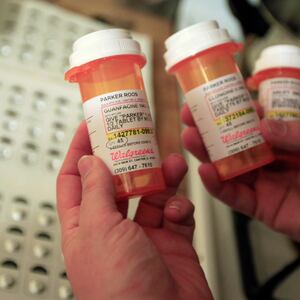Autism is typically diagnosed at around five years of age in the U.S.. However, the earlier it's recognized, the sooner parents and caregivers can support children with the disorder. That’s because autism creates delays for social and information processing—which poses a large challenge when these children begin entering school.
It can be difficult to diagnose though. After all, there’s no blood test you can administer to identify it, and doctors need to rely on observing patient behaviors and listening to the parents. However, some new research offers up a new and accurate way of predicting autism that could accurately spot it in toddlers younger than two years old.
Researchers at the Marcus Autism Center at Children’s Healthcare of Atlanta developed a method of measuring children’s looking behavior to diagnose autism in kids aged 16 to 30 months. This method, which is described in a pair of studies published in JAMA Network Open and the Journal of the American Medical Association, allows clinicians to spot the disorder earlier.
“The results show that the way in which young children look at social information can serve as an effective and objective biomarker for early signs of autism,” lead author Warren Jones, director of research at Marcus Autism Center, said in a statement.
The method, dubbed the Marcus Test, is actually a device that tracks children’s eye movements in response to social interactions. In clinical trials, the researchers analyzed data gathered from roughly 500 children between the ages of 16 and 30 months. The participants watched videos of social interactions as they wore the device, which measured their eye movements at a rate of 120 times per second.
The researchers used the data gathered and created a diagnostic evaluation based on eye tracking information from the childrens’ peers as well as their individual social, verbal, and non-verbal learning ability. The team found that the automated measurements accurately predicted the disorder and matched expert clinical diagnoses of autism at six different leading autism centers in the U.S..
“The far-reaching implications of these results may mean that children who currently have limited access to expert care, and face two or more years of waiting and referrals before finally being diagnosed at age four or five, may now be eligible for diagnosis between the ages of 16 and 30 months,” co-author Ami Klin, the division chief of autism and developmental disabilities at Emory University School of Medicine, said in a statement.
He added, “In addition, this technology measures each child’s individual levels of social disability, verbal ability and non-verbal learning ability, which is critical information for clinicians when developing personalized treatment plans to help each child make the greatest gains.”
If and when it’s rolled out at a commercial scale, the device will have a profound impact in alleviating the burden on the current medical system and open the doors for treatment access for the nearly 200,000 patients waiting to be diagnosed with autism. These patients will finally be able to receive the support they need for their disorder—and look forward to a brighter future.








